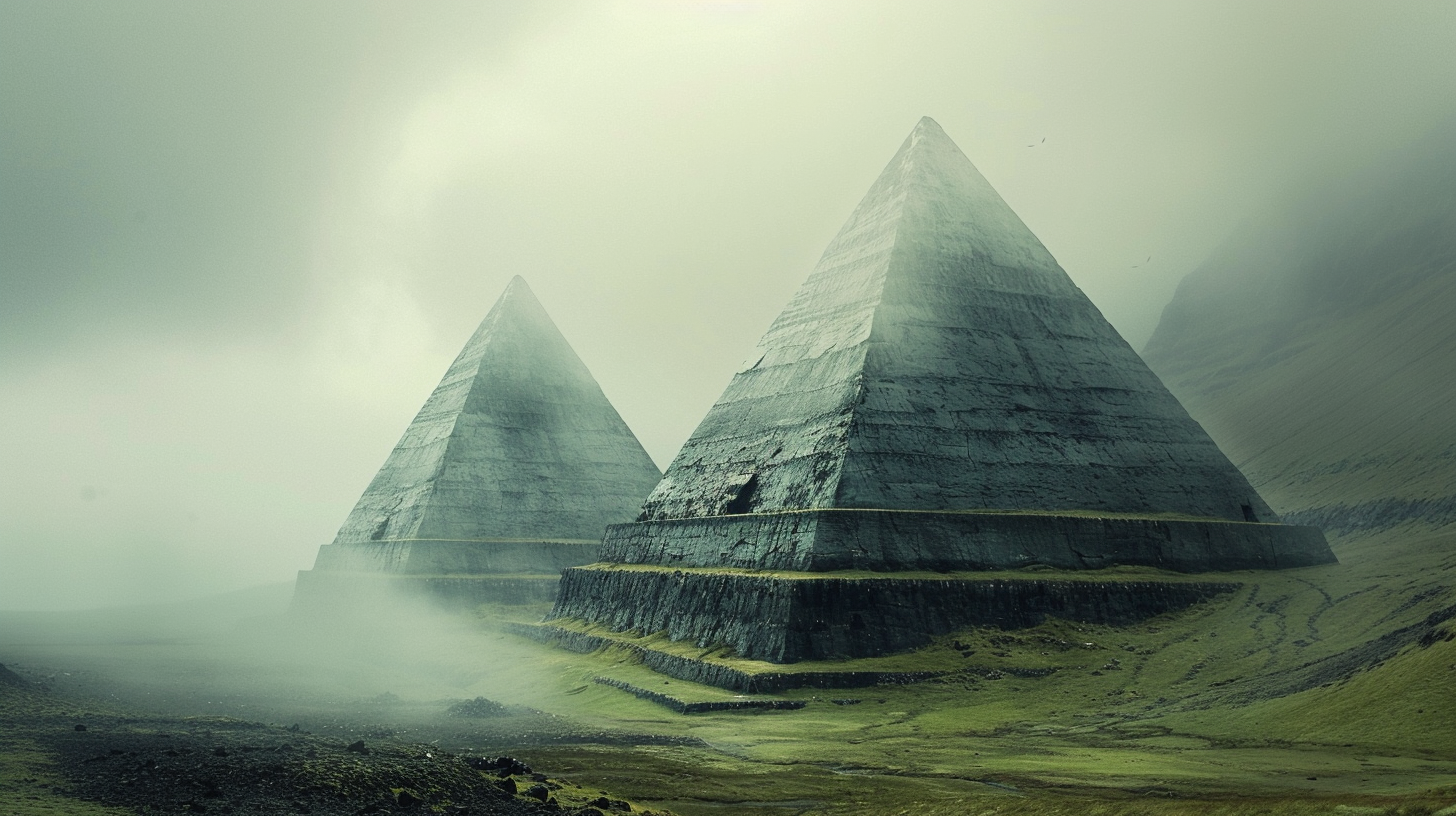The Lost Pyramid of Huni
The Lost Pyramid of Huni has long captivated the imagination of historians and archaeologists as it is one of ancient Egypt’s great enigmas. Pharaoh Huni, the final ruler of the Third Dynasty, should, as far as we know, have a Pyramid. Yet it has eluded discovery to this day.
This quest for his pyramid not only highlights the architectural splendor of ancient Egypt but also underscores the civilization’s complex landscape that has quite literally been lost to the sands of time.
Who Was Pharoah Huni?
Huni is an enigmatic figure from ancient Egypt’s early dynastic period. As the last pharaoh of the Third Dynasty, he established a fortress on the island of Elephantine, securing Egypt’s southern border at the First Cataract, whilst he also presided over a time of significant architectural innovation, particularly in pyramid construction.
Also known as “The Smiter,” Huni is attributed with several small pyramids scattered throughout Egypt, particularly small step pyramids in remote areas. These pyramids, like the Seila Step Pyramid and the Maidum Pyramid, are believed to be associated with him.
Despite his historical importance, direct evidence linking Huni to a specific major pyramid has yet to be unearthed, along with his final resting place
He has never been found and it makes sense for him to have a grand pyramid. So where is he and his pyramid?
Searching for Huni’s Pyramid
Either lost to time or still buried under eons of sand, Huni’s pyramid may be hidden for now, but we are actively searching and taking the search very seriously. Why? It’s another missing piece of the Ancient Egyptian puzzle. We have his records, we know of his contributions, yet any trace of the pharaoh himself has vanished.
Theories on Location
Numerous theories have emerged regarding the possible location of Huni’s pyramid.
- Some scholars suggest it may lie hidden near known pyramids of later pharaohs, believing that Huni initiated a tradition of pyramid-building that was continued by his successors.
- Others speculate that remnants of Huni’s pyramid could be mistaken for parts of other structures or not yet uncovered by modern archaeological methods.
- Some say he can be attributed to the medium pyramid, yet that has been debunked
- Saqqara is another popular location for his resting place. But nothing has been found there we can pin against his name. Saqqara is put forward as it is the home of the Djoser step pyramid, the most ancient pyramid in Egypt. Simple logic would dictate that Huni’s pyramid could likely be found here too.
Why it Makes Sense for Huni’s Pyramid to Exist
The rationale for Huni having a pyramid is rooted in the practices of his era and successors.
As a pharaoh, it would have been customary for Huni to commission a monumental tomb to assert his divine status and ensure his passage to the afterlife. The evolution from mastaba tombs to the step pyramids just before his reign suggests that Huni might have continued or even innovated this architectural trend. If this is indeed true, then why would Huni not want to be buried in the very innovation he birthed?
Furthermore, EVERY pharaoh of the Old Kingdom who followed Huni had a pyramid built, making it logical to assume Huni’s pyramid existed as a precursor or part of this continuum.
Theories and Debates
The debate over Huni’s pyramid encompasses various hypotheses about its design, location, and even its very existence.
One prevailing theory connects Huni to the Meidum Pyramid, initially attributed to his successor, Snefru. This theory suggest that Huni began its construction, which Snefru later completed or repurposed. Another hypothesis suggests that the Layer Pyramid at Zawyet El Aryan, which remains unfinished and undated, could be Huni’s.
Conversely, some scholars argue that Huni’s monument might not be a pyramid at all but rather a different form of tomb or memorial lost to history. These debates highlight the challenges of piecing together ancient history with limited evidence and the evolving nature of archaeological interpretations.
Conclusion
The search for Huni’s pyramid is a journey into the heart of ancient Egypt’s architectural and cultural legacy and one that reflects the ongoing quest to understand the origins and evolution of pyramid construction. As archaeologists continue to explore the sands of Egypt with advanced technologies and methodologies, the mystery of Huni’s pyramid remains a compelling narrative, inviting both scholarly debate and the imagination of the public. Who knows what we’ll find next!





